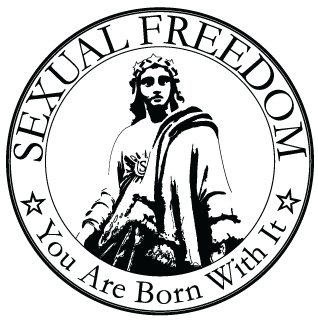Grassroots
-
Winning (so far). Net Neutrality Protest Tomorrow
•
2 min read
Grassroots efforts to save Net neutrality may be working . . . more needs to be done to ensure the Internet is protected. There’s no time to waste in feeling gratified even though advocacy organizations such as Free Press, CREDO, and MoveOn.org, along with tech companies such as Google and Facebook, and rank-and-file grassroots activists are…
-
Re-envisioning the future: A personal call to action
•
5 min read
VenusPlusX re-envisions the future as A New Age of Sexual Freedom because that is a state of being the heralds the end of racism (at its root sexual oppression) and the end of nationalism for the purposes of war (at its root racism)and other forms of inhumane exploitation. In connection with our recent relaunch, a…
-
The Trevor Project was founded in 1998 by the creators of the film “Trevor“: James Lecense, Peggy Rajeskim and Randy Stone. The Academy Award-winning film is about a young boy dealing with being bullied while undergoing self-discovery about his sexual identity. The three creators soon found out that there was little (if any) support for Lesbian, Gay,…
-
Violence against D.C. prostitutes has gone too far
•
4 min read
Violence against local D.C. prostitutes has become alarming. A local transgender woman, “Jane,” who wishes to remain anonymous, shared her story with me. As she describes it,”I was beat an inch from my life.” She said she was going to work as usual,”clocking in” as it’s called — those few moments that you take…
-
Hairy Politics
•
5 min read
Happy No Shave November, everyone! (not sure who came up with this…) Since when is body hair gendered? Doesn’t it just seem logical that people are hairy? Warmth for winter, right? Apparently if you live in mainstream America, the answer is no. From a young age, girls are expected to shave their body hair –…
-
A Second Chance
•
3 min read
No one encouraged me to be productive, to make something of my life. Hell, I thought selling drugs and prostituting were careers so naturally when I grew up I followed in those footsteps. I became a prostitute which led to drug addiction and then the cycle began. Nothing good became of my life, each day…
-
International Transgender Day of Remembrance in DC
•
2 min read
This month’s official DC Transgender Day of Remembrance honors all of those who have died in the strucggle for equality, and their families, as activists rededicate themselves to help answer today’s community concerns. Celebrated internationally, the Transgender Day of Remembrance in DC will take place at 6 PM, Tuesday, November 20, 2012, at the DC…
-
Blow the Whistle on Stop and Frisk Today
•
1 min read
The Stop Mass Incarceration Network will be blowing the whistle on the NYPDs “stop and frisk” program. It is estimated that every day 2,000 New Yorkers 2000 of color get unconstitutionally stopped by police in the war on drugs. Organizers Carl Dix and Cornel West are calling on thousands of people in New York and…
-
Mass Incarceration: Follow The Money (Part 2)
•
6 min read
America’s unconstitutional militarization of local and state law enforcement, based on racial hatred and racial politics, and the training, munitions, and financial incentives that support it, has created a new Police State. Slavery ended, and reactionary Jim Crow laws replaced it, and now Mass Incarceration, called The New Jim Crow by scholars, is imprisoning people of color for…
-
Mass Incarceration: Follow the Money (Part 1)
•
3 min read
Take a walk through America’s unconstitutional militarization of local and statelaw enforcement, based on racial hatred and racial politics, and the training, munitions, and financial incentives that support it. Since we finished reading legal scholar Michelle Alexander’s startling book, The New Jim Crow, we decided to speak up more on the toll and tragedy of Mass Incarceration in…
